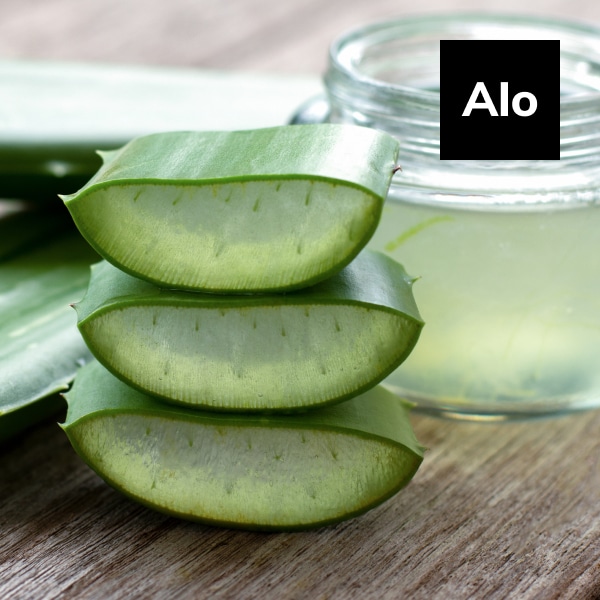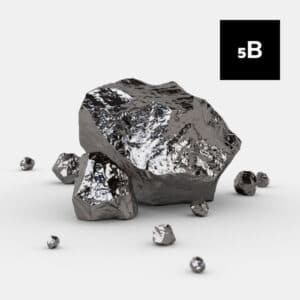Overview
Aloe vera (Aloe barbadenis) has demonstrated a wide range of pharmacological activity as an antibacterial, antifungal, antiviral, anti-allergy, and anti-inflammatory. Traditional uses of aloe, which is derived from a cactus-like plant that grows in hot, dry climates, include treating skin conditions and promoting wound healing. Researchers are finding that it does much more. Aloe can be taken internally to support healthy blood glucose, reduce gut inflammation, provide numerous nutrients, and combat various diseases.
Key Benefits
- Helps balance and restore the immune system
- Reduces inflammation
- Enhances absorption of nutrients
- Supports gut health
- Supports healthy blood glucose
- Helps regulate bowel activity
- Improves skin ailments
- Supports healing from burns
- Promotes dental health
- Supports healthy blood lipids
- Supports bone health
History of Usage
Aloe vera records indicate that it was being used for medicinal purposes as far back as 1750 B.C. in Mesopotamia. The aloe plant, regarded as an ancient miracle remedy, has been used medicinally for thousands of years, beginning in Ancient Egypt. The use of aloe in the United States is documented in the US Pharmacopoeia of 1820, in which a number of aloe laxative preparations are described. In the early 1900s, there were more than 27 different aloe preparations in use, and the cultivation of aloe for pharmaceutical purposes started in 1920. Today it is used for a variety of ailments and in numerous consumer products ranging from beverages to cosmetics.
Biochemistry
Aloe vera contains more than 75 compounds, including vitamins A, C, E, and B12, enzymes, minerals, and various carbohydrate polymers, notably glucomannans. The aloe mucilaginous polysaccharide molecule is absorbed into the intestines, where it assists naturally occurring healthy flora to thrive. This provides an anti-inflammatory, healing protective coating to the digestive tract. The 25 known anthraquinone glycosides found in aloe vera provide cathartic effects, antioxidant, and anti-osteoporotic activities.
Aloe also contains fatty acids, hormones, lignin, salicylic acid, and saponins.
Recent Trends
By the year 2020, the global aloe vera market is expected to be worth $602 million. Between 2021 and 2026, the market is predicted to increase at an annual rate of 8.5%, resulting in a 2026 market value of around $982.4 million.
In addition to increasing immunity, aloe vera gel can be used to treat oral issues, microbial growth in the mouth, skin disorders, and digestive difficulties. It is widely used across several industries, including cosmetics, personal care, food and beverage, pharmaceutical, and dietary supplements.
Precautions
- Pregnant and breastfeeding women should not take aloe before consulting with a healthcare provider.
- Individuals with intestinal conditions should consult with their healthcare provider before taking aloe vera.
- Aloe vera should be discontinued at least two weeks before the surgery.
- Individuals taking digoxin, anti-diabetic medications, laxatives, diuretics, and warfarin should check to their healthcare provider before taking aloe.
References
- Long V. Aloe Vera in Dermatology—The Plant of Immortality. JAMA Dermatol. 2016;152(12):1364. doi:10.1001/jamadermatol.2016.0077
- KOJO ESHUN & QIAN HE (2004) Aloe Vera: A Valuable Ingredient for the Food, Pharmaceutical and Cosmetic Industries—A Review, Critical Reviews in Food Science and Nutrition, 44:2, 91-96, DOI: 10.1080/10408690490424694
- Sánchez M, González-Burgos E, Iglesias I, Gómez-Serranillos MP. Pharmacological Update Properties of Aloe Vera and its Major Active Constituents. Molecules. 2020 Mar 13;25(6):1324. doi: 10.3390/molecules25061324. PMID: 32183224; PMCID: PMC7144722.
- Surjushe A., Vasani R., Saple D.G. Aloe vera: A short review. Indian J. Dermatol. 2008;53:163–166. doi: 10.4103/0019-5154.44785.
- 2. Malik I., Zarnigar H.N. Aloe vera-A Review of its Clinical Effectiveness. Int. Res. J. Phar. 2003;4:75–79. doi: 10.7897/2230-8407.04812.
- 3. Maan A.A., Nazir A., Khan M.K.I., Ahmad T., Zia R., Murid M., Abrar M. The therapeutic properties and applications of Aloe vera: A review. J. Herb. Med. 2018;12:1–10. doi: 10.1016/j.hermed.2018.01.002.
- Alshatwi A.A., Subash-Babu P. Aloe-Emodin Protects RIN-5F (Pancreatic β-cell) Cell from Glucotoxicity via Regulation of Pro-Inflammatory Cytokine and Downregulation of Bax and Caspase 3. Biomol. Ther. 2016;24:49–56. doi: 10.4062/biomolther.2015.056.
- Alinejad-Mofrad S., Foadoddini M., Saadatjoo S.A., Shayesteh M. Improvement of glucose and lipid profile status with Aloe vera in pre-diabetic subjects: A randomized controlled-trial. J. Diabetes Metab. Disord. 2015;14:22. doi: 10.1186/s40200-015-0137-2.
- Prueksrisakul T., Chantarangsu S., Thunyakitpisal P. Effect of daily drinking of Aloe vera gel extract on plasma total antioxidant capacity and oral pathogenic bacteria in healthy volunteers: A short-term study. J. Complement. Integr. Med. 2015;12:159–164. doi: 10.1515/jcim-2014-0060.
- Sun YN, Li W, Lee SH, Jang HD, Ma JY, Kim YH. Antioxidant and anti-osteoporotic effects of anthraquinones and related constituents from the aqueous dissolved Aloe exudates. Nat Prod Res. 2017 Dec;31(23):2810-2813. doi: 10.1080/14786419.2017.1295238. Epub 2017 Mar 13. PMID: 28287279.




